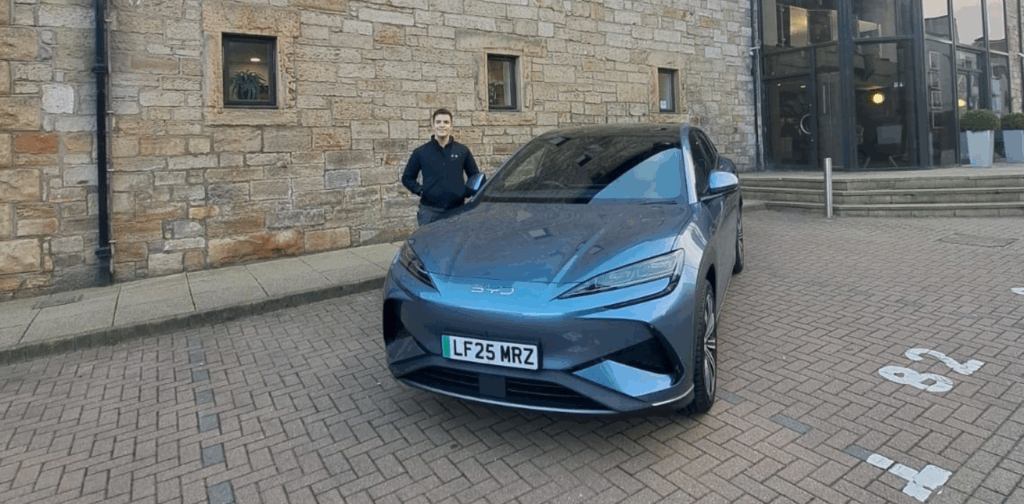Over the past few years, the car market has seen a quiet revolution. While European brands like BMW, Audi and Land Rover have traditionally dominated UK roads, a new wave of manufacturers from China is shaking things up, particularly in the electric vehicle (EV) space.
If you’re no stranger to UK roads, you’ll have certainly seen brands like BYD, Omoda, and Jaecoo cropping up more often than a few years ago. These cars are doing more than enter the market; they’re dominating it.
At the time of writing, BYD has just overtaken Tesla to become the UK’s biggest overseas EV seller. These Chinese brands are certainly going head-on with the big players on quality, technology, and driving experience.
However, with all the noise surrounding them, are Chinese cars really worth considering? And are they here to stay? Let’s have a look.
From “cheap and cheerful” to setting the standard
Let’s be honest, the first Chinese cars to arrive in the UK didn’t make the best impression. Models like the ORA Funky Cat were incredibly affordable, but early adopters reported a high number of faults and reliability issues. Even the first generation of MG electric models, like the MG4, suffered from battery glitches and breakdowns.
Fast-forward to today, and the story looks very different. Reliability has improved significantly, and these brands are finding their rhythm. Don’t just read the headlines, ask anyone in the industry.
As a vehicle broker and EV Salary Sacrifice provider ourselves, the new MG4 has done a complete U-turn, becoming one of our most-popular EVs, and for good reason. Similarly, the likes of BYD, Omoda, and Jaecoo are setting new benchmarks for performance and quality.
The major shift has come in how these cars feel and perform. Early interest was all about price; now, the conversation has moved to value, and that includes everything from build quality to driving experience.
Clients who have driven premium EVs such as the Tesla Model 3 or Model Y are now switching to the BYD Seal, and the feedback has been overwhelmingly positive. Drivers are describing smoother handling, stronger battery performance, and interiors that rival—if not exceed—established competitors.
With many of these brands still offering strong manufacturer support and competitive leasing discounts to build awareness in the UK, it’s arguably one of the best times to explore them.
Breaking old perceptions
A year ago, many clients would have hesitated if we mentioned a “Chinese brand.” That’s changing fast. With EV adoption rising and more people focusing on real-world quality rather than brand heritage, we’re seeing premium-brand drivers, from Range Rover to Tesla, happily test-driving cars like the BYD Seal or Omoda 9.
Once people sit inside and experience the technology first-hand, the stigma tends to disappear. The finish, software interface, and battery tech in particular are surprisingly advanced, and in some cases, superior to what’s currently available from legacy brands.
Built (not converted) for the new electric era
Perhaps the biggest advantage for Chinese manufacturers is that most of them were built from the ground up to make electric vehicles.
While European brands are juggling petrol, hybrid and electric platforms, companies like BYD and Omoda are going all-in on EV. That means their cars are designed specifically to house large battery systems efficiently, not adapted from existing combustion models. The result? Better balance, longer range, and smarter interior packaging.
It also helps that the Chinese government has invested heavily in EV infrastructure and manufacturing over the past decade, giving these brands a head start on technology and scale.
Hands-on with the BYD Sealion 7
Doing your research online is one thing, but how do we really measure how these Chinese cars perform? Well, by driving one, I suppose.
To see what all the fuss was about, we let one of the Marketing team out of their cage for a few days to put the all-electric BYD Sealion 7 through its paces.

Thanks Beth. I was fortunate to take the BYD Sealion 7 for a spin for a few days. Let me just start by saying this: There’s a reason Chinese cars are taking over. It’s part of BYD’s growing “Ocean Series” line-up, aimed at drivers looking for something a little different from the usual European offerings. It delivers exactly that.
How it looks
The Sealion 7 has a confident, but contemporary look. Its sloping roofline gives it a coupe-like profile, while the wide stance adds to its sense of presence on the road. The C-shaped LED headlights and signature BYD grille create a striking front end that helps it stand out in a crowded segment.
It may look a little sportier than its competitors (certainly didn’t bother me!), but it doesn’t sacrifice any of the practicality. It’s an attractive and well-proportioned SUV.
How it drives
On the road, the BYD Sealion 7 is what every EV needs to be: quick and smooth. Quiet, too. They’ve put a lot of effort into the noise insulation, which really shows at higher speeds. The electric powertrain delivers instant response and strong acceleration, without compromising ride comfort.
As a non-native to Edinburgh, I had to explain to my colleagues that it’s actually NOT normal for a 3-mile journey to take 40 minutes. Luckily, the Sealion’s auto-stop feature and comfort over speed bumps made even city driving a breeze.
Even someone who writes for a living is struggling to put into words just how easy and fun it is to drive. Going back to my Astra felt like driving a combine harvester in comparison.
Interior and technology
Inside, the Sealion 7 impresses with its modern layout and tech-heavy approach. The standout feature is a 15.6-inch touchscreen that can rotate between landscape and portrait orientations. Why does it do this, you ask? Because it’s cool, that’s why!
You’re also supported by a lovely and clear digital driver display. Material quality is generally good, with soft-touch finishes and elegant design details giving the cabin a premium feel.
It’s a car that’s built for the future, that’s for certain.
Verdict
After spending some quality time with the BYD Sealion 7, there’s only one question one my mind: Can I keep it?
Kidding, mostly. The real question is: with Chinese cars now offering this level of quality and innovation at competitive prices, how will European automakers keep up?
Thanks Jack. Now give it back.
So, are Chinese cars worth the hype?
They’re not perfect, and not every brand will survive long-term. But the likes of BYD, Omoda, and Jaecoo are already proving they can compete with, and sometimes outperform, traditional European names. They’re bringing genuine innovation, attractive pricing, and excellent technology to the EV market.
And for drivers open to exploring beyond the usual German trio, there’s real value to be found, especially through leasing or EV Salary Sacrifice, where you can experience these cars without long-term commitment.
These cars are no longer the “budget option.” They’re credible, capable, and absolutely worth a look!

